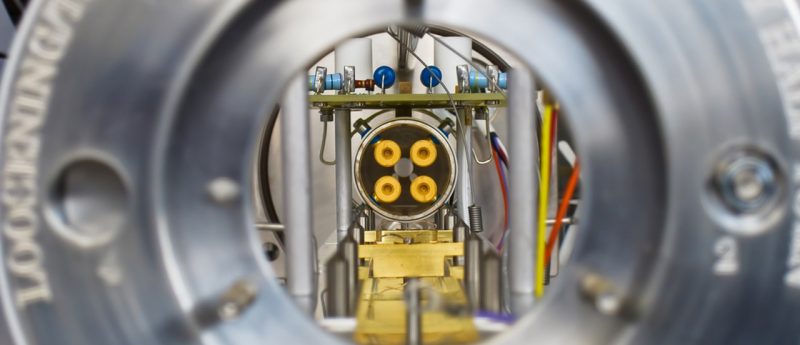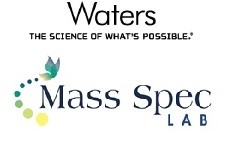Alignment of Emerging Biomedical R&D Challenges with Tof-HRMS Capability and Versatility

 The Biomedical device sector is undergoing rapid expansion and its qualitative and quantitative analytical needs are expanding in unison with this growth. The causes behind this increase are many. One major factor is the availability of venture capital for biomedical devices which has been driven by the “rapid development” timeline of devices which deliver both novel and generic active pharmaceutical ingredients (APIs) using innovative and targeted technological platforms.
The Biomedical device sector is undergoing rapid expansion and its qualitative and quantitative analytical needs are expanding in unison with this growth. The causes behind this increase are many. One major factor is the availability of venture capital for biomedical devices which has been driven by the “rapid development” timeline of devices which deliver both novel and generic active pharmaceutical ingredients (APIs) using innovative and targeted technological platforms.
Biomedical devices and pharmaceutical drug delivery devices encompass a broad range of products. As examples, intraocular lenses (IOLs), insulin pumps, orthopedic implants, coated stents, blood oxygenators and pacemakers are all biomedical devices. Production of such a diverse range of devices involves a multitude of different materials, procured from an army of different suppliers, constructed using a long sequence of assembly steps, utilizing processes which more often than not require a long list of processing aids, e.g., surfactants, stabilizers, mold release agents, and plasticizers and exposure to extreme process conditions such as temperature, UV exposure (in photo curing) and laser exposure.
The extreme challenges inherent in ISO 10993 extractables and leachables testing of biomedical devices are clearly evident. E&L is a regulatory driven activity and difficulties encountered in biomedical device E&L can pose real hurdles in the regulatory approval process and ultimately to commercialization of the therapeutic product. A universe of analytes is out there and E&L testing regulatory expectations are that the chemical analyst will detect, structurally identify and quantify analytes present even down to the ppm level. In contrast, the analytes of a conventional small molecule drug product are far more well-defined. Lower cost triple quad mass spectrometers with low resolution (unit mass resolution) and high sensitivity have been the workhorses of the traditional (small molecule) pharmaceutical industry because this tool has met the need for sensitive quantification of “known” analytes in targeted analyses such as DMPK studies. Non-targeted analysis is the norm and the first level of attack in the biomedical device world. Once identified and characterized, targeted quantification becomes pivotal.
High resolution mass spectrometry is the only developed, readily available instrumentation capable of meeting the analytical challenges (qualitative and quantitative) presented by E&L testing of biomedical devices. Q-Tof MS and the Orbitrap are currently the two most popular HRMS platforms on the market. The mass resolution and sensitivity of the Orbitrap in the “low mass” (i.e. 0-200 amu) range is excellent for specialty impurity ID testing, while the affordability, mass range, sufficient sensitivity, and mass resolution of the Q-Tof platform, makes it the most versatile instrument for comprehensive, nontargeted screens of device leachates and extracts and thus influenced our choice of HRMS platform. Mass Spec Lab selected the Q-Tof mass spectrometer because of the inherent flexibility to do qualitative and quantitative (i.e. non-targeted and targeted) analysis on a single platform.
Selection of the “front end” or LC of the platform was equally critical. Our system includes a UPLC system which has operated trouble free and with impressive separation capability because of its low dispersion properties. We have found that we can often accomplish the separations we need with 5 minute screening runs which rapidly span the reverse phase polarity range (95%aqueous to 100%acetonitrile), while collecting the non-targeted and, when necessary, targeted information that the assay might require. The Tof-HRMS platform allows us to take full advantage of this speed and efficiency in separation with no drop in qualitative or quantitative performance including chromatographic resolution, sensitivity, linearity, mass spectral resolution and other analytical merits.
Our front end also includes a PDA UV detector after the column, upstream of the source and MS. This may seem a prosaic item to situate in HRMS territory. However, the analytical information obtained from the PDA is important for E&L testing of device extracts. Until circa 2005, CDRH (Center for Device and Radiological Health), the division of the FDA that reviews 510K, IDE and PMA device submissions, was reviewing E&L studies that contained primarily LC/UV and some GC/MS data. LC/MS data in these submissions were atypical. Since 2005, CDRH’s expectations have changed and LC/MS data are rapidly approaching requirement status. However, because CDRH’s experience record has been built on UV data, LC/UV data is still extremely important. So important that any significant UV-active analyte detected in E&L extracts must be structurally identified and quantify (by UV and/or via HRMS) provided. The tandem configuration (PDA followed by Tof-HRMS) of the Mass Spec Lab system enables one-to-one correspondence of an analyte’s UV and mass spectral peaks which is fundamental to structural characterization and subsequent quantification of the UV peak.
Structural characterization of untargeted analytes is an extreme analytical challenge. I have touched on a few instrument considerations in which I have firsthand experience. Suffice it to say the list of instrument considerations is much longer than those highlighted here. Notwithstanding, the obvious analytical challenges we routinely encounter, the UPLC-Tof-HRMS combination best satisfies our instrument needs at this point in the growth of our institution.
Development of new applications and ultimately growth of HRMS in the biomedical device sector is inevitable. The entrance and continued investment by traditional pharmaceutical companies such as Pfizer, Merck, and Allergan in biomedical devices will continue to fuel this growth. Large device companies such as Medtronic and J&J are also expected to expand the use of HRMS as device regulatory requirements tighten and as their products become more “drug-like” as they deliver both novel and generic APIs with these innovative and targeted technological platforms. Drug-device combination products, predominantly drug delivery devices such as coated implants, injectors, pumps and transdermal patches are on the rise. A clear demarcation between pharmaceutical and device products is fading. This presents an opportunity for the LC/MS community. Improved instrumentation, development of accurate mass LC/MS fragment libraries and introduction of new work flows will be required.
Mass spectral fingerprinting and quantification (using surrogate peptide or intact molecule quantification) originally developed for bio-therapeutics is an example of a developed workflow we have been adapting for biomedical device QA/QC applications. Our work flow aspires to characterize complex material extracts using HRMS capabilities, MSE and Non-linear Dynamics Progenesis software to create high resolution 2D fragment maps. These maps can be far more specific than an FTIR spectrum. Assurance of lot‑to‑lot chemical equivalence of incoming batches with a “gold standard” fingerprint is a worthy application especially for critical and sensitive materials such as biomedical device adhesives. Mass spectral fingerprinting can also expedite alternate component sourcing. At one time or another, many analysts have been faced with an unexpected material source change with limited time and money to qualify a new source and implement the new material into the process. By showing indisputable chemical similarity/equivalence (quantitative levels), mass-spectral fingerprinting has the potential to fast track this process. Mass Spec Lab is dedicated to the development and application of Tof-HRMS as a flexible and robust resource to address growing complex device-centric problems in this expanding segment of the Biomedical device industry.
Click here for more information on Waters Corporation and for a comprehensive list of their products.
